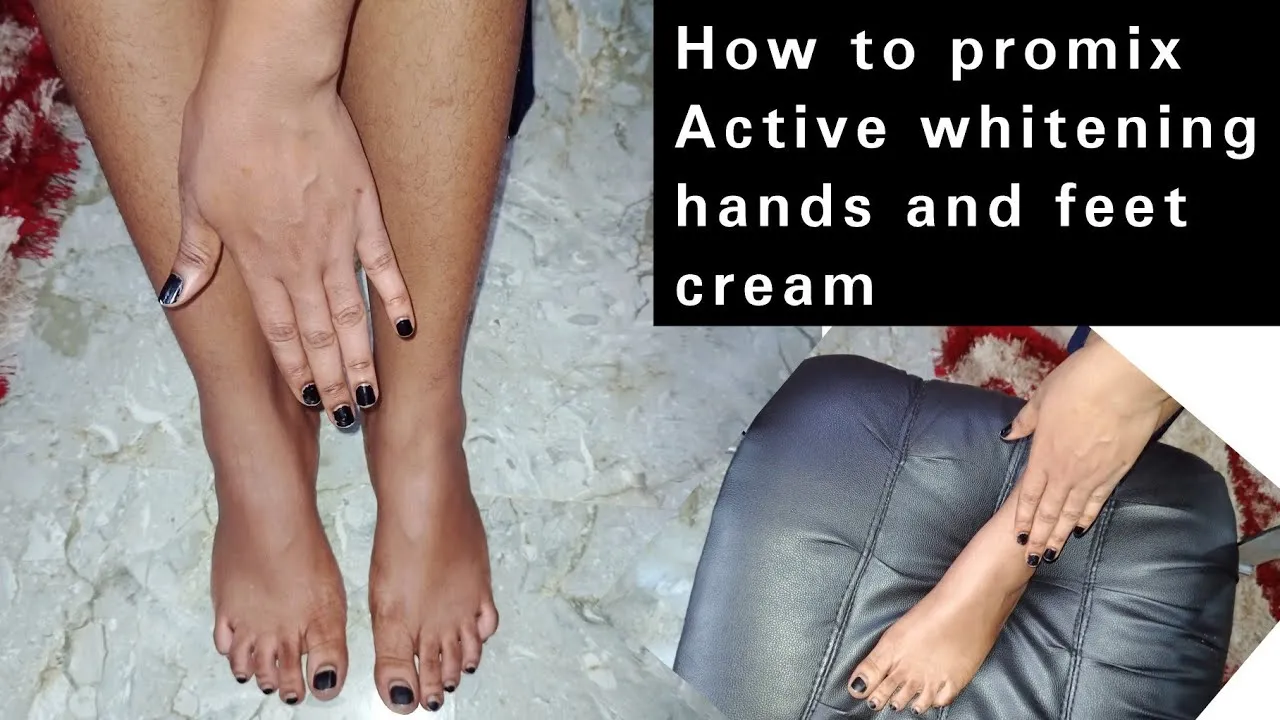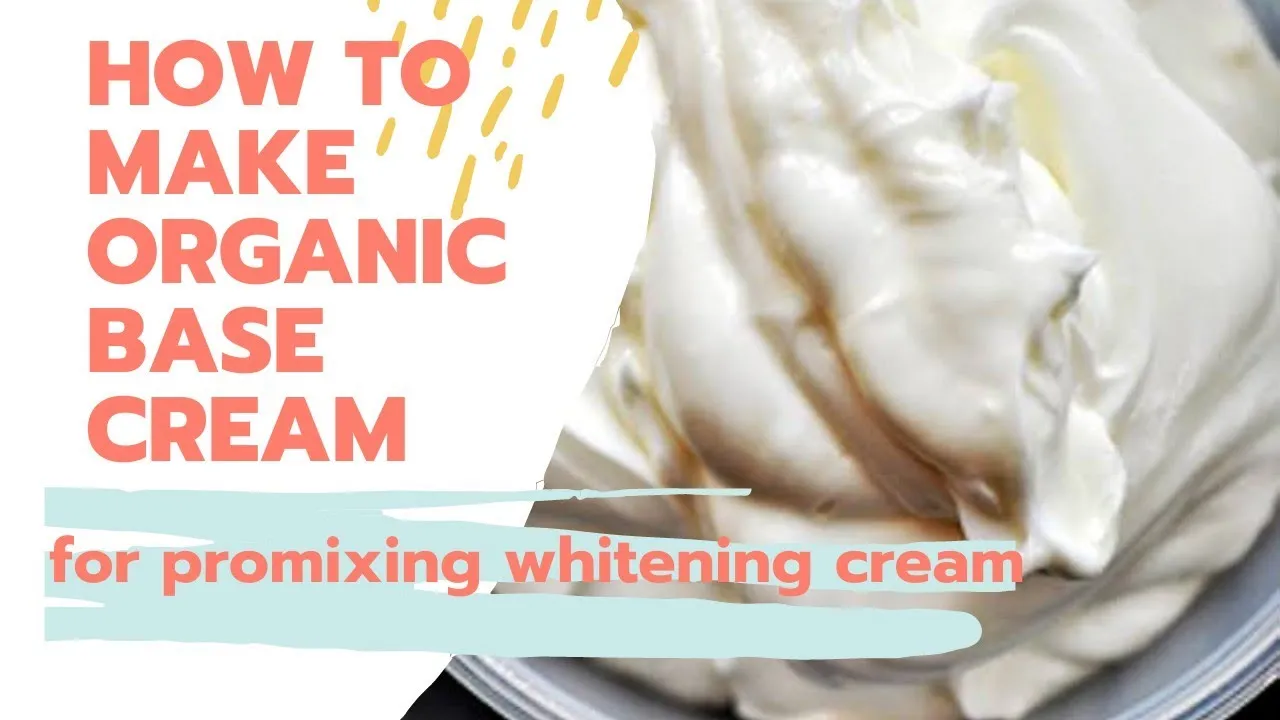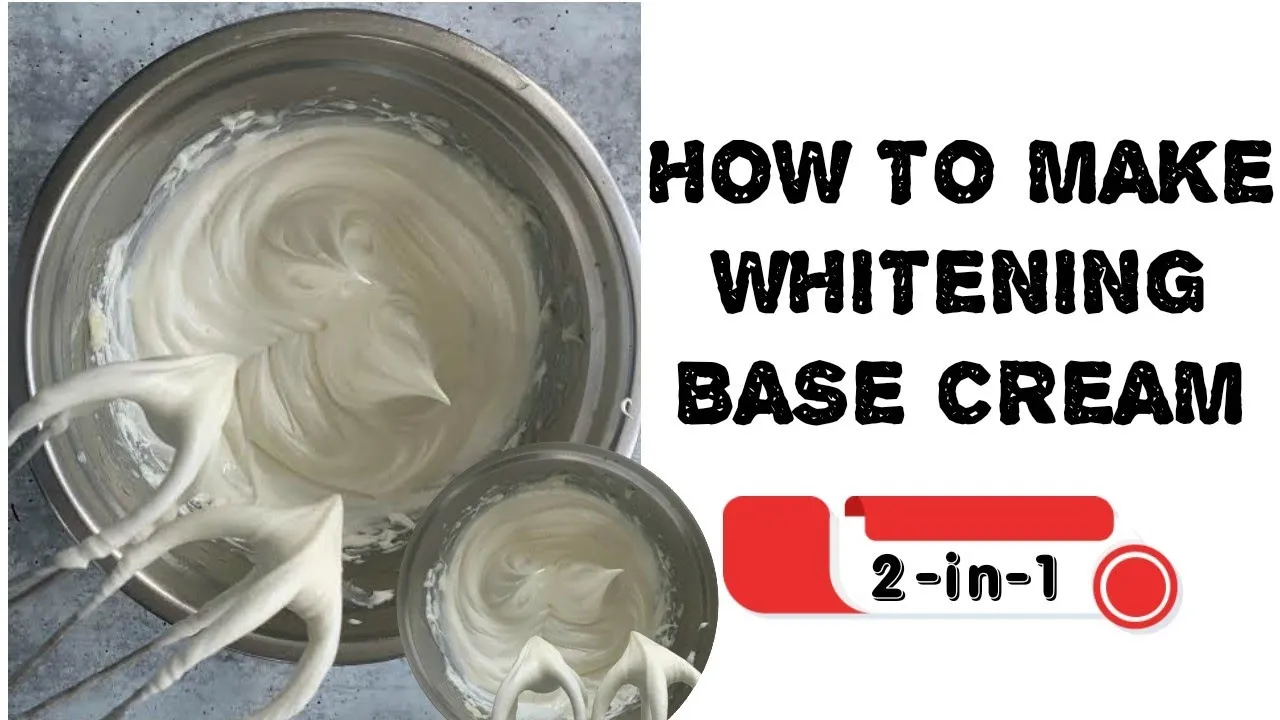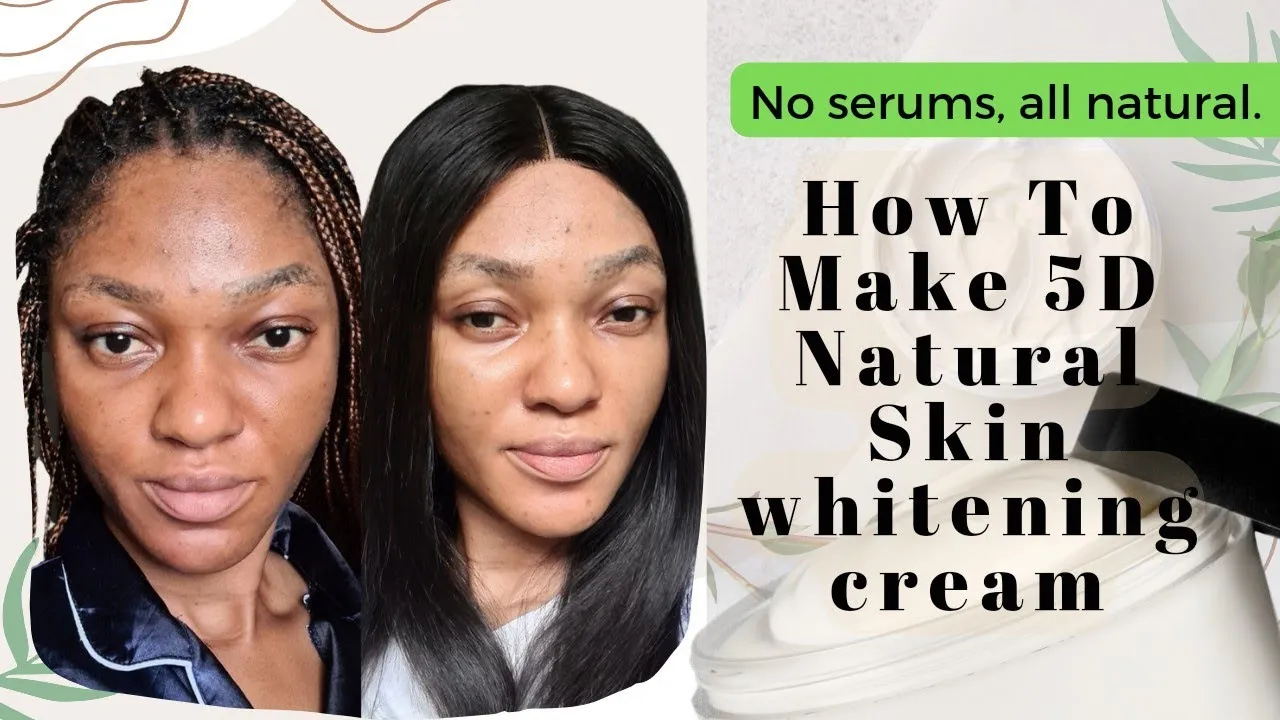Understanding Promixing Whitening Cream
Promixing whitening creams are designed to lighten the skin by reducing the production of melanin, the pigment responsible for skin color. These creams often contain active ingredients that target melanin production at different stages. This guide provides a comprehensive overview of how to make your own promixing whitening cream, allowing you to control the ingredients and tailor the product to your specific needs. It is essential to approach this process with caution, understanding the ingredients, and following the instructions carefully to ensure safety and effectiveness. The ultimate goal is to achieve a brighter, more even skin tone, but it’s crucial to prioritize skin health throughout the process.
What is Promixing Whitening Cream
Promixing whitening cream typically refers to a cream that combines various ingredients to promote skin lightening. These creams aim to reduce hyperpigmentation, such as dark spots, sunspots, and uneven skin tone, leading to a brighter complexion. The effectiveness of these creams depends on the concentration and type of active ingredients used. It’s crucial to understand that not all ingredients are suitable for all skin types. Therefore, a careful selection of ingredients and a thorough understanding of their effects is essential for creating a safe and effective product. The term ‘promixing’ suggests a blend of multiple ingredients, emphasizing a holistic approach to skin whitening.
Benefits of Using Promixing Whitening Cream

The primary benefit of using promixing whitening cream is to achieve a lighter and more even skin tone. This can boost self-confidence and improve the appearance of the skin. Furthermore, these creams can help fade dark spots caused by sun exposure, aging, or acne scars. Regular use can result in a more radiant complexion, often reducing the visible signs of aging. Some formulations also offer additional benefits, such as moisturizing and protecting the skin from environmental damage. However, it’s important to note that the effectiveness can vary, and results depend on the ingredients, skin type, and consistent use. It’s also crucial to combine the use of whitening creams with a good skincare routine, including sun protection.
Ingredients You’ll Need
Creating a promixing whitening cream involves carefully selecting and combining various ingredients. The choice of ingredients is critical to the cream’s effectiveness and safety. Always use high-quality ingredients from reputable suppliers. It is also recommended to research each ingredient to understand its function and potential effects on your skin. Proper measurements and precise mixing are essential for creating a stable and effective cream. Before starting, ensure you have all the necessary ingredients and equipment ready to avoid any interruptions during the process. Always follow the instructions carefully to achieve the desired results and avoid any adverse reactions.
Key Whitening Agents
Key whitening agents are the active ingredients responsible for lightening the skin. Common examples include hydroquinone, kojic acid, arbutin, and vitamin C. Hydroquinone is a potent skin-lightening agent but requires careful use due to potential side effects. Kojic acid is a natural compound derived from fungi, which can inhibit melanin production. Arbutin is a natural derivative of hydroquinone, considered a gentler alternative. Vitamin C, in the form of ascorbic acid or its derivatives, acts as an antioxidant and helps lighten skin tone. When selecting these, consider your skin type and consult with a dermatologist to determine the most appropriate ingredients and concentrations for your needs. Always perform a patch test before applying the cream to a larger area.
Emulsifiers and Stabilizers

Emulsifiers and stabilizers are essential for creating a stable cream. Emulsifiers help to blend oil and water-based ingredients, preventing them from separating. Common emulsifiers include cetyl alcohol, stearic acid, and emulsifying wax. Stabilizers, such as xanthan gum or carbomer, provide the cream with the desired consistency and help maintain its structure over time. The proper selection and use of emulsifiers and stabilizers are crucial for ensuring the cream’s texture, shelf life, and overall effectiveness. These ingredients are critical to the cream’s stability, ensuring that the active whitening agents are evenly distributed and deliver their benefits. Always follow the manufacturer’s instructions when using these ingredients.
Additional Ingredients for Enhanced Results
Beyond whitening agents, additional ingredients can enhance the cream’s effectiveness and benefits. These include moisturizers like glycerin or hyaluronic acid, which hydrate the skin. Antioxidants, such as vitamin E or green tea extract, protect the skin from free radical damage. Sunscreen agents are crucial to protect the skin from UV rays, which can darken the skin and counteract the effects of whitening creams. Always check the compatibility of each ingredient and avoid combining ingredients that may react negatively. Also, consider adding ingredients like niacinamide, known for its skin-brightening properties and ability to reduce inflammation. Incorporating these ingredients can significantly improve the cream’s overall performance and results.
Step-by-Step Guide to Making Promixing Whitening Cream
Creating promixing whitening cream requires precision and care. This step-by-step guide will help you make your own cream at home. Always prioritize hygiene and safety throughout the process. Carefully follow each step to ensure the cream’s effectiveness and stability. If you are unsure about any part of the process, research the steps further or consult with a professional. Start with clean equipment and a well-prepared workspace. Precise measurements and thorough mixing are the keys to a successful outcome. Remember to always test the cream on a small area of your skin before applying it broadly.
Preparing Your Workspace and Equipment

Before you begin, prepare your workspace by cleaning and sanitizing all surfaces. Gather all necessary equipment, including beakers, mixing spoons, a digital scale, a heat source (such as a double boiler), and storage containers. Ensure all equipment is clean and dry. It’s also advisable to wear gloves and a mask to maintain hygiene and prevent contamination. Organize your ingredients and measure them accurately according to the recipe. Proper preparation minimizes the risk of contamination and ensures a smooth, efficient process. Having everything ready beforehand will make the process more manageable and ensure better results. Make sure to use the correct type of containers for mixing and storing the cream.
Mixing the Ingredients
Follow the recipe to combine the ingredients, ensuring that all measurements are exact. Start by combining the oil-based ingredients in a heat-resistant beaker or container. Heat the oil phase using a double boiler or a similar method, ensuring the temperature doesn’t exceed the recommended levels for the ingredients. Then, separately, heat the water phase. Once both phases are at the appropriate temperatures, slowly add the water phase to the oil phase while continuously mixing. Use a spatula or a small hand mixer to ensure thorough blending. Be careful not to overheat the ingredients, as this can affect the cream’s effectiveness. Continuous mixing helps to create a smooth, homogenous mixture. The mixing process is essential for creating a stable and effective emulsion.
Emulsification Process
The emulsification process is crucial for combining the oil and water phases. Slowly add the water phase to the oil phase while stirring constantly. Continue stirring until the mixture thickens and emulsifies. The speed of the mixing and the order in which the ingredients are added play a vital role in the final texture of the cream. Ensure the mixture reaches the desired consistency. Using a hand mixer can accelerate the emulsification process. Proper emulsification ensures the cream’s stability, preventing the separation of oil and water components. If the cream does not emulsify properly, it may not have the desired consistency or stability. The emulsification process is crucial for the cream’s texture and long-term stability.
Adding Additional Ingredients

Once the emulsion is formed, add additional ingredients like whitening agents, preservatives, and other beneficial components. Always add these ingredients when the mixture has cooled down to the recommended temperature, typically below 40°C (104°F), to prevent the degradation of sensitive ingredients. Mix thoroughly after adding each ingredient to ensure an even distribution. It’s crucial to be careful when adding active ingredients to ensure that they are incorporated uniformly into the emulsion. The order of adding ingredients can affect the final product’s performance. Stirring the mixture slowly and carefully ensures that all ingredients are well-dispersed throughout the cream.
Testing and Storage
After making the cream, it’s crucial to test its stability and effectiveness. Perform a small-scale test on a small area of your skin before applying it to a larger area. Observe for any adverse reactions, such as redness, itching, or irritation. If no adverse effects are observed, store the cream in a clean, airtight container in a cool, dark place away from direct sunlight. Always label the container with the date of creation and the ingredients used. The shelf life of the cream will depend on the ingredients used and the effectiveness of the preservative. Regular monitoring of the cream’s appearance and smell is essential to ensure it remains stable and safe to use. Proper storage ensures the cream maintains its quality and effectiveness over time.
Tips for Effective Use and Maintenance
Using promixing whitening cream effectively requires understanding proper application techniques and skincare practices. Consistent and correct usage is essential to achieving the desired results. Incorporate the cream into your daily routine, paying attention to sun protection and the overall health of your skin. Regular maintenance ensures the cream remains effective and minimizes potential side effects. Always be patient, as results take time and vary based on the individual’s skin type and the ingredients used. Remember that skincare is a continuous process, and a holistic approach often yields the best results.
Proper Application Techniques

Apply the cream to clean, dry skin, typically once or twice daily, as directed by the product instructions. Gently massage a thin layer of the cream onto the affected areas, such as dark spots or uneven skin tone. Avoid applying the cream near the eyes, mouth, and other sensitive areas. Be sure to use a small amount to avoid irritation. Overuse will not lead to better results and may increase the risk of side effects. Consistency is essential for seeing results, so apply the cream regularly. Always follow the manufacturer’s instructions regarding the frequency and amount of application. Apply the cream in gentle, circular motions, allowing it to absorb completely into the skin. Before applying, ensure your skin is clean and properly exfoliated to enhance the absorption of the cream.
Sun Protection and Skincare Routine
Sun protection is a non-negotiable part of any skincare routine when using a whitening cream. Always apply a broad-spectrum sunscreen with an SPF of 30 or higher every morning, even on cloudy days. Sun exposure can worsen hyperpigmentation and diminish the effectiveness of the cream. In addition to sunscreen, incorporate other skincare products that support skin health, such as a gentle cleanser and a hydrating moisturizer. Regular exfoliation can help remove dead skin cells, improving the penetration of the cream and enhancing its effects. Make sure to drink plenty of water and maintain a healthy diet to support skin health from within. A comprehensive skincare routine that incorporates sun protection and hydration can maximize the cream’s effectiveness.
Potential Side Effects and Precautions
While promixing whitening creams can offer benefits, it’s essential to be aware of potential side effects and take precautions. Some ingredients may cause skin irritation, redness, or dryness, especially if used in high concentrations or on sensitive skin. Always conduct a patch test before using the cream on a larger area of your skin. If you experience any adverse reactions, discontinue use immediately and consult with a dermatologist. Always follow the instructions carefully and avoid overuse. Be vigilant about the ingredients and their potential effects on your skin. Monitoring your skin’s response is essential to ensure its health and safety. Seeking professional advice before use can help minimize potential risks.
Allergic Reactions and Skin Sensitivity

Allergic reactions and skin sensitivity can occur with the use of promixing whitening cream. Common symptoms include itching, redness, swelling, and blistering. If you suspect an allergic reaction, discontinue use immediately and consult a dermatologist. Certain ingredients, such as hydroquinone, are known to cause irritation in some individuals. If you have sensitive skin, perform a patch test before applying the cream to a larger area. If you experience any signs of sensitivity, such as stinging or burning, stop using the cream. Always be aware of the ingredients in the cream and their potential allergens. Selecting hypoallergenic formulations can also help reduce the risk of adverse reactions. Keeping your skin hydrated can reduce irritation.
When to Consult a Dermatologist
Consulting a dermatologist is crucial if you experience persistent skin irritation, allergic reactions, or if you have concerns about using promixing whitening cream. A dermatologist can assess your skin type, determine the appropriate ingredients and concentrations, and provide personalized recommendations. They can also help you manage any side effects and monitor the effectiveness of the cream. If you are using a cream with hydroquinone or other potentially strong ingredients, regular check-ups with a dermatologist are advisable. They can also guide you on whether promixing whitening cream is appropriate for your skin condition. Consulting a professional is important for ensuring skin health and safety. A dermatologist can offer expert advice.
